The Article
MOON NEO ACE: A Star Turn or A Waste of Space?
6th September 2016
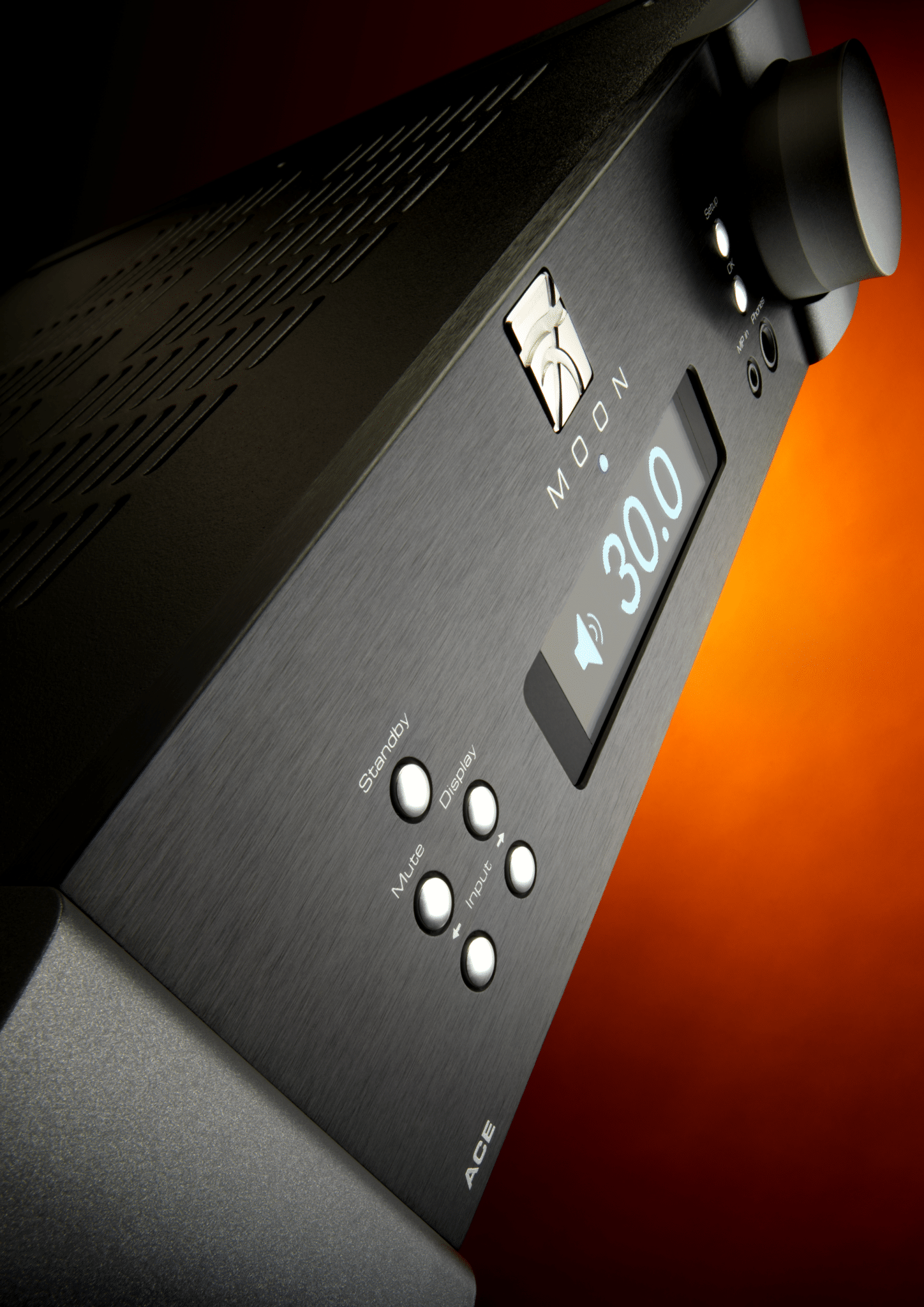
Looking for an all-in-one hi-fi unit? Moon asks Paul Rigby to “just add speakers” while reviewing the Neo Ace
The name, Ace, is actually an acronym, standing for ‘A Complete Experience’. An bold title but it’s nice to see Moon being so ambitious. This all-in-one system looks to provide the user with everything that they might need in a stereo hi-fi system. And it just about does that by offering an integrated amplifier with a high-resolution DAC and streamer, Bluetooth with aptX support, Wi-Fi, an Ethernet socket, Internet radio via vTuner, TIDAL support and a moving magnet phono stage.
The included class A/B amplifier offers 50W per channel (into 8 Ohms) while the attendant DAC supports files up to 32bit/384kHz and DSD256 files. That includes WAV, FLAC and AIFF tracks. The Neo Ace can also stream songs from your laptop or NAS drive, as long as they’re all connected to the same network.
Connections include two pairs of RCA inputs (and one output), two inputs of optical and coaxial and a USB type-B for laptop connection. The front facia provides a 3.5mm input and a 6.3mm headphone port. I found no issues while operating the numerous interface options whether that includes using the remote or the unit’s own from fascia interface.
The Ace’s solid, attractively curved, aluminium chassis is strong, straight-forward and unpretentious with just a few buttons to operate plus a rotating volume dial and a clear and easy to use OLED display. Here, you can perform a range of operations such as changing the input, muting the sound, dimming the display and more.
The third interface alternative is the MiND Controller app. MiND or ‘Moon Intelligent Network Device’ is the the relatively simple control system behind Moon’s streaming module. With it, you can select songs from every source. It’s fast and efficient.
The basic approach to an all-in-one system from Moon is an interesting one. Compare the Ace with the similarly priced Cyrus Lyric and the Entotem Plato and you trip over contrasting philosophies. To some extent Cyrus and, more so, Entotem have aimed their design and development at a form of lifestyle nirvana. This technology sector promises attendant riches but demands much from anyone wishing to occupy this difficult and unforgiving sector. Moon appears to have rejected this tempting option and has set itself firmly in the Hi-Fi realm. For a hi-fi outfit, I applaud this decision. Why? Because, you either fully embrace the lifestyle ethic and spend millions making the box foolproof in terms of its usability so that even your Granny can’t cock it up (i.e.: like a Sky TV box or similar) while spending more millions on marketing and support for those Grannies that have managed to do just that or you realise that you would be over-reaching to even try. Once you’ve come to the latter realisation, you save time, money and certain hassle by aiming your box at the hi-fi and audiophile specialists.
The result, for the Ace, is a relatively stripped (and very much more simplified) control fascia compared to the Lyric and Plato, a far more svelte chassis and a lack of expensive hand holding in support terms. For those into their hi-fi, this means that they can get on with listening to music much quicker without having to trawl through a multitude of settings and screens. It also means that the final unit price goes down and you don’t have to include extraneous and troublesome features (in an all-in-one system) such as a built-in CD player, which encourages distortive noise.
SOUND QUALITY
On that basis, because there is no built-in CD player, I did the next best thing and hooked up the Moon to my Leema Elements CD player and listened to the Moon’s DAC via the S/PDIF port. Before looking at the Ace as a stand-alone hi-fi component, I wanted to test each part of the box, to see how each performed.
At this stage, I had the Moon hooked up to my reference hi-fi system to isolate the DAC. Playing Bing Crosby’s Mandy, which allowed me to hear the iconic baritone vocal fronting a Buddy Cole jazz combo, I was happy to hear a relatively low noise output that was, considering the configuration and the price, neither obtrusive nor distracting. What I did hear was Crosby offering a relaxed (as ever!) and easy going lead vocal. His textured delivery offered plenty of subtle emphasis via an emotive performance that flowed easily. Buddy Cole’s piano danced easily under the vocal along with the brushed percussion accompaniment.
One of the sonic highlights was the bass. I’m not inferring that bass dominated this track. On the contrary. What bass did, though, was take the normally shy upright bass and give it a fuller role in the song. The Moon offered a secure and weighty foundation for the lower frequencies. Also, more importantly, bass was particularly focused so that it never got in the way. On a lesser system, bass can be smudged with an irritating bloom that infects the midrange. All of these positive factors added to the sense of a clean sonic output from the Moon.
Still isolating the Ace, I switched to an Astell & Kern AK120 DAP and played Dire Straits’ Money for Nothing through the optical port, playing at 24bit/88.2kHz. This is a bright master so I was interested to see how the hardware tackled this troublesome presentation.
Three things impressed me about the Moon, at this point. Firstly, the track still exhibited the excessive peak limiting so the harsh master was visible but the Moon was able to hold all of the nasty frequencies in the palm of its hand and keep control of each, preventing any nasties forcing the ear to wince.
Secondly, the bass was not only powerful and solid but I was impressed by the tonal character of each part of the drum kit that only added to the rich nature of the lower frequencies.
Finally, the soundstage was so wide, I needed a taxi to get from the left to the right speaker. The expansive nature of the synth runs created an ‘epic’ presentation from this clean and focused track.
I then plugged my Apple MacBook, featuring a SSD drive, into the USB port and played Tchaikovsky’s Souvenir de Florence op.70: 1. Allegro con sprito at 24bit/192kHz via Audirvana. I personally don’t recommend this direct approach. If you can, play your music through your laptop via a dedicated, small external hard disk and place that unit on an isolation pod of some sort. The computer might be playing your music but it’s also busy being a computer and, hence, creates noise in the process. Nevertheless, playing music direct from a laptop is a common (often unavoidable due to mobility issues) occurrence so I pursued the test from this ‘crippled’ configuration.
As such, I was impressed with the dynamic reach of the string section which soared and then kept on going during crescendos and moments of high excitement. I was also impressed with the instrumental separation between the violins and cellos. The lower frequencies, via the cellos, were tight, offered an almost portentous power but, again, they were isolated and kept themselves to themselves, allowing the soundstage to sound rich, complex and layered.
I then paired my iPhone 6S with the Moon. Doing this took a few seconds of menu manipulation on the Ace but the actions were few and the pairing painless. I played Kylie Minogue’s All the Lovers from her Abbey Road Sessions via an MP3.
Normally, when you stream MP3 files, the sonic results are dire. Not here, though. In fact, the results were a pleasant surprise. Yes, the basic issues of the limited and limiting technology remained but, having said that, the Moon’s penchant of inserting air into the soundstage gave Minogue an uncharacteristically spacious presentation while I could even make out a strumming guitar low in the mix where, on lower costs systems, such a noise was basically morphed into the digital sludge.
Finally, I tested the Moon as it really should be tested, as a standalone unit. The main reason, of course, why you would buy the thing in the first place. So I reattached my Astell & Kern AK120 and played Bob Marley’s I Shot The Sheriff at 24bit/96kHz through the reference speakers and let her rip.
The result was nothing short of beautiful. That percussion. So crisp. Superb precision without being bright with a bass guitar that bounced around the soundstage like a low frequency ping pong ball. Such was the character and vigorous nature of the instrument. The organ was whole musical and the guitars informative with plenty of string textures. As for the vocal? Both the Marley and backing harmonies stood apart, in their own space, which allowed them to enjoy micro-reverb effects of their own, adding a sense of clarity to their performance.
CONCLUSION
What can I say? It worked and worked well. The Ace offers a gamut of facilities that will cover just about every hi-fi task from analogue to digital while handling a broad array of external sources. The fact that it’s also a stand-alone unit with a built-in amplifier and speaker connections means that it will be ideal for those who are short of space. Easy to use, packed with features, sounds great…what more do you need?
MOON NEO ACE
Price: £2,800
Web: www.renaissanceaudio.co.uk
Tel: 0131 555 3922
GOOD: midrange precision, instrumental separation, bass focus, feature count
BAD: nothing at the price
RATING: 8
REFERENCE
Cyrus Lyric
Aesthetix Calypso pre-amp
Icon Audio MB 845 Mk.II monoblocks
Quad ESL-57 speakers with One Thing mods
Spendor S3/5R speakers
Vertex AQ & Tellurium Q cabling

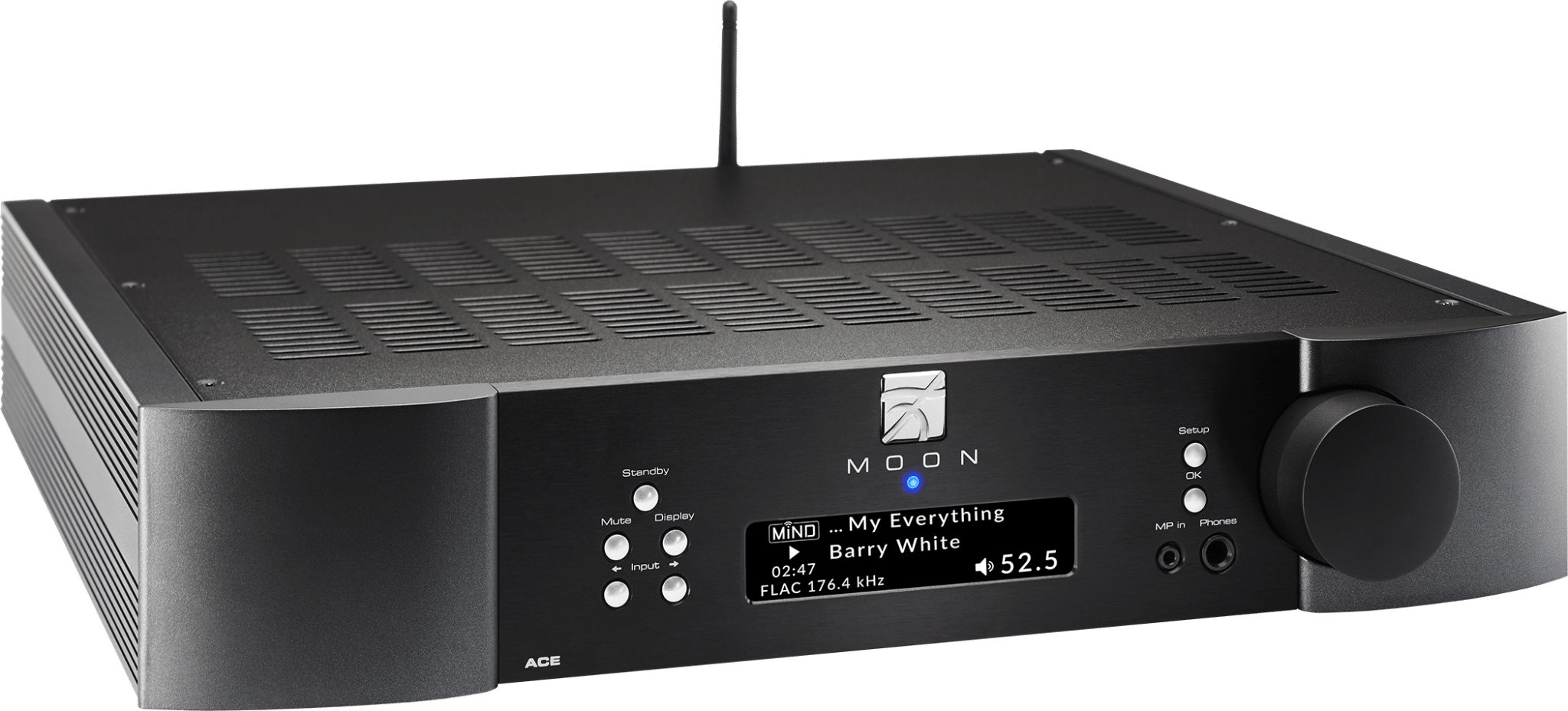
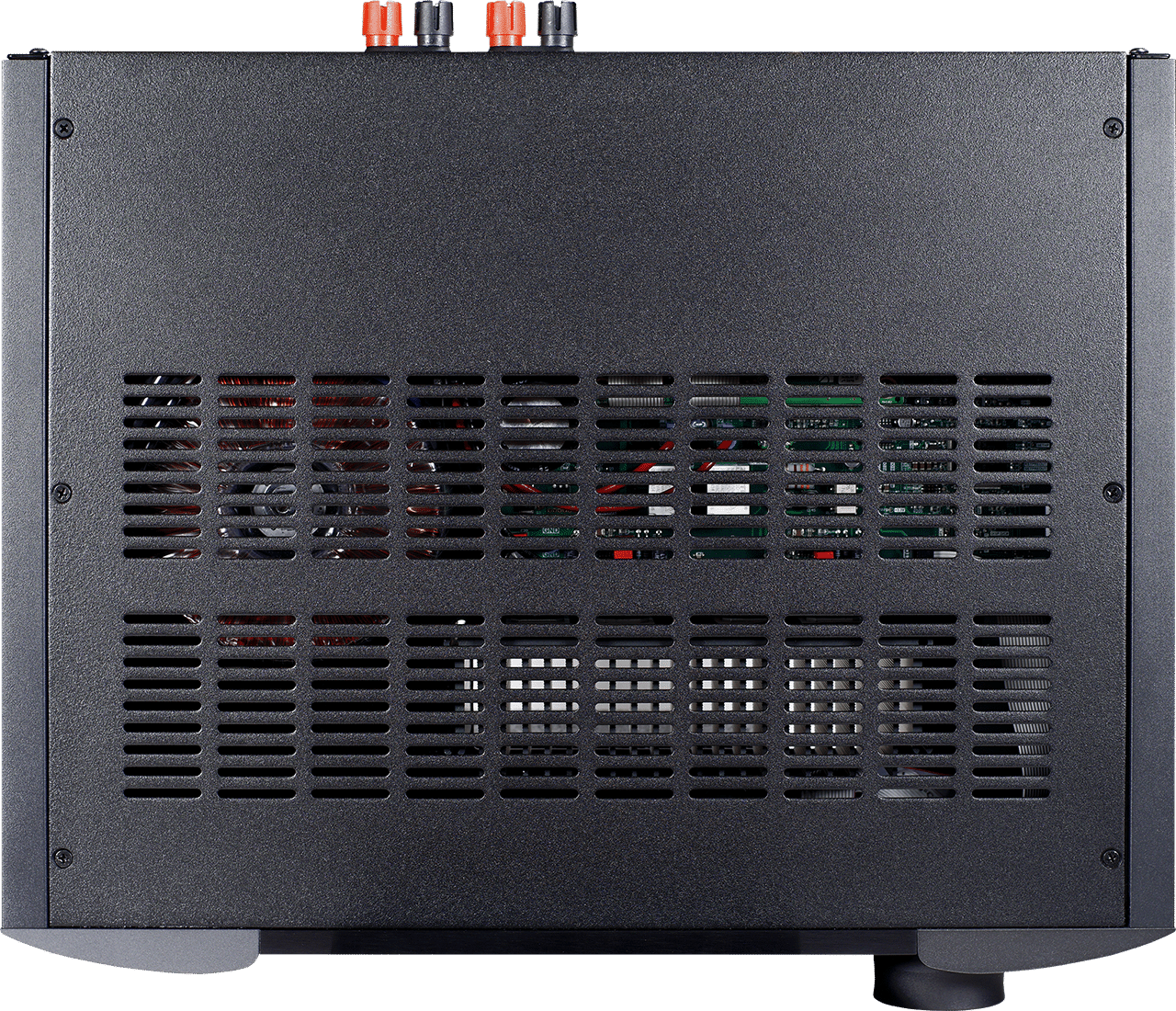
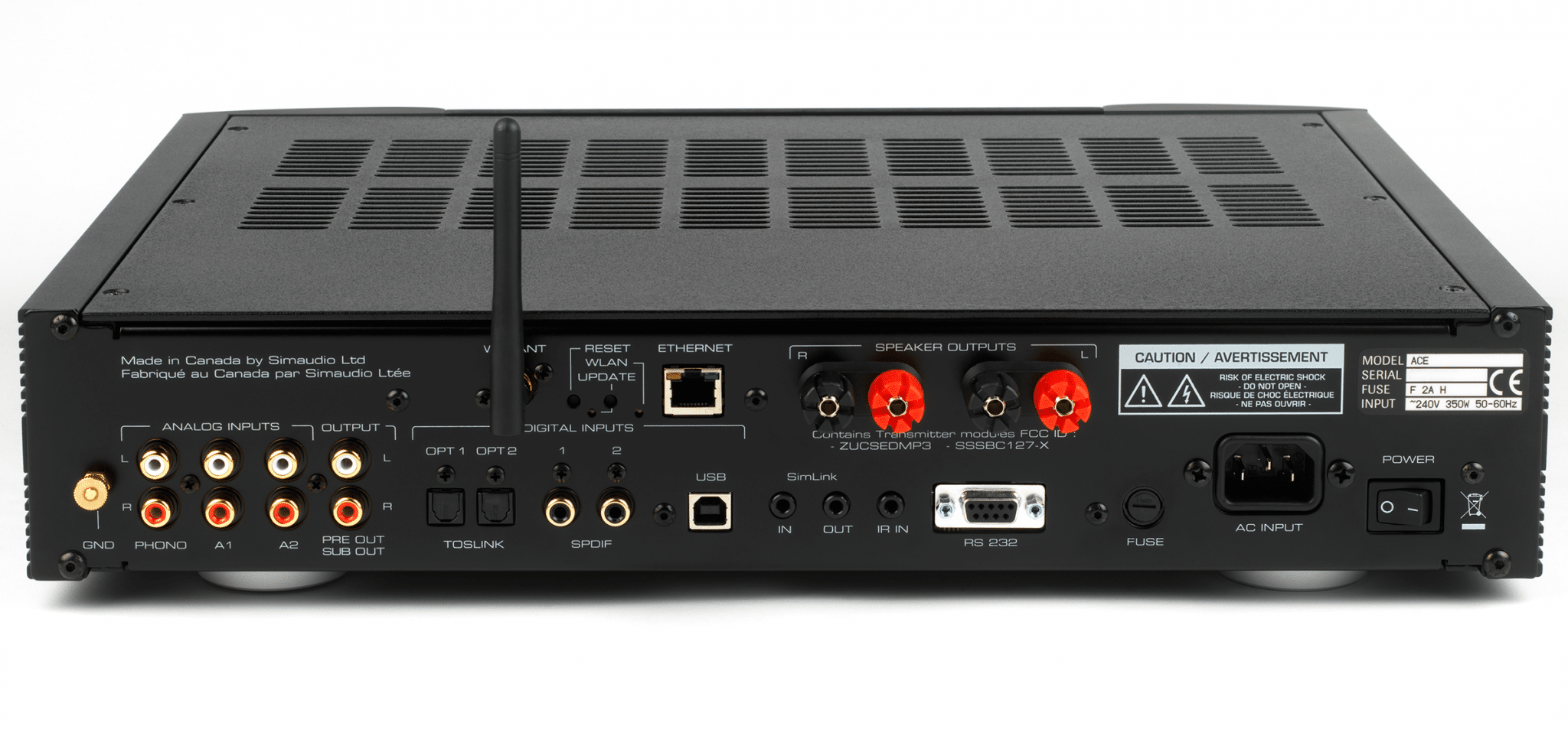
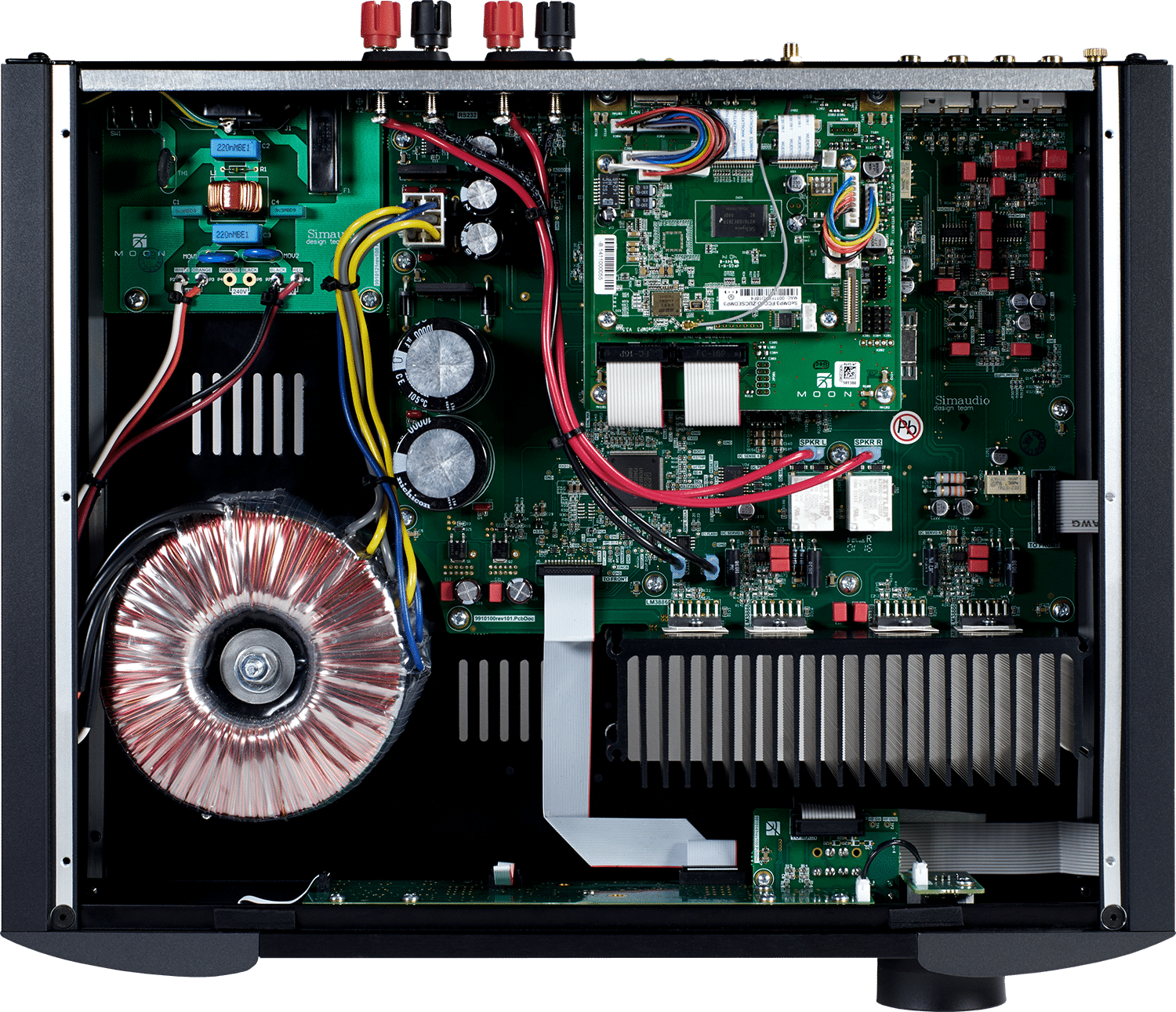
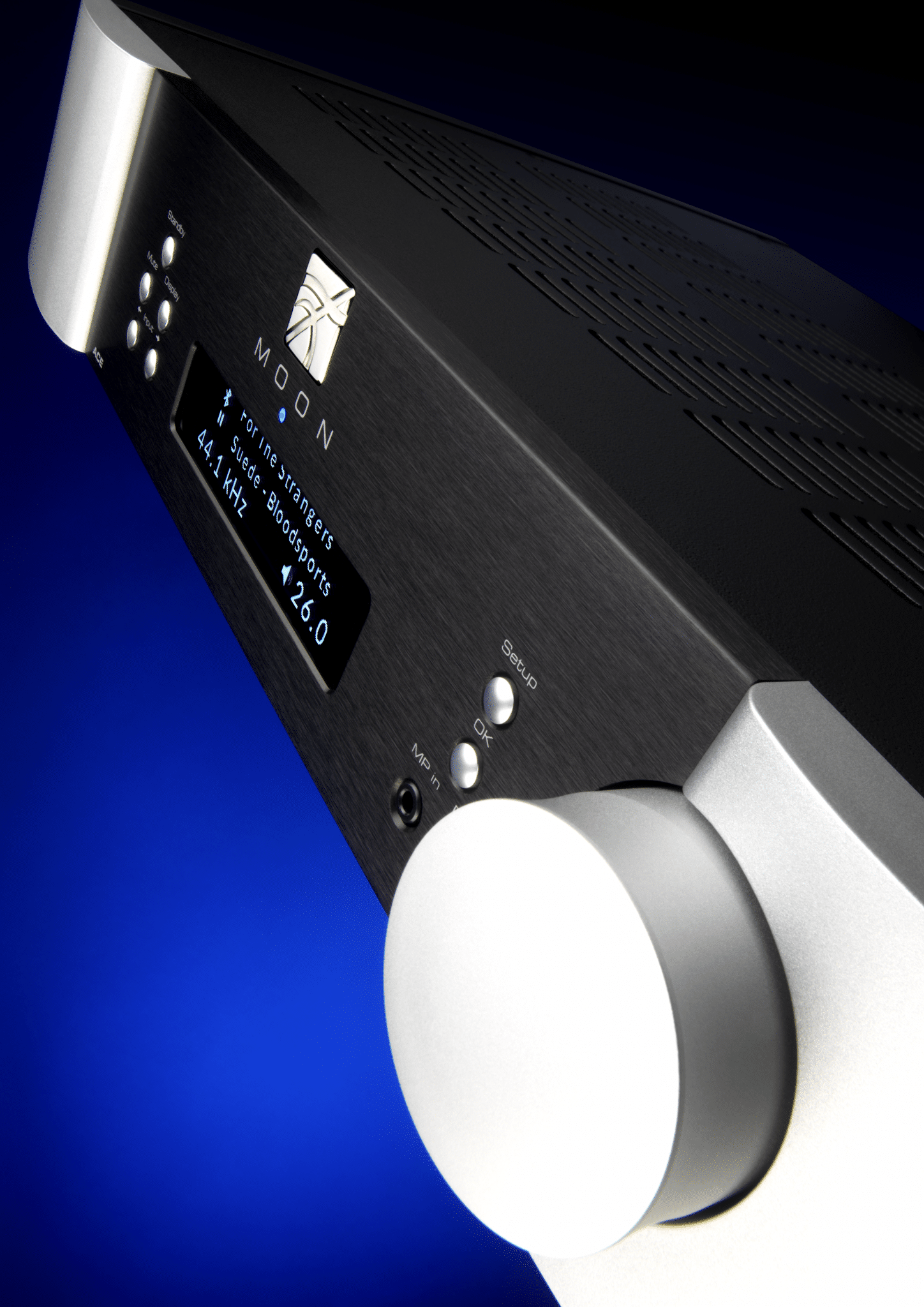
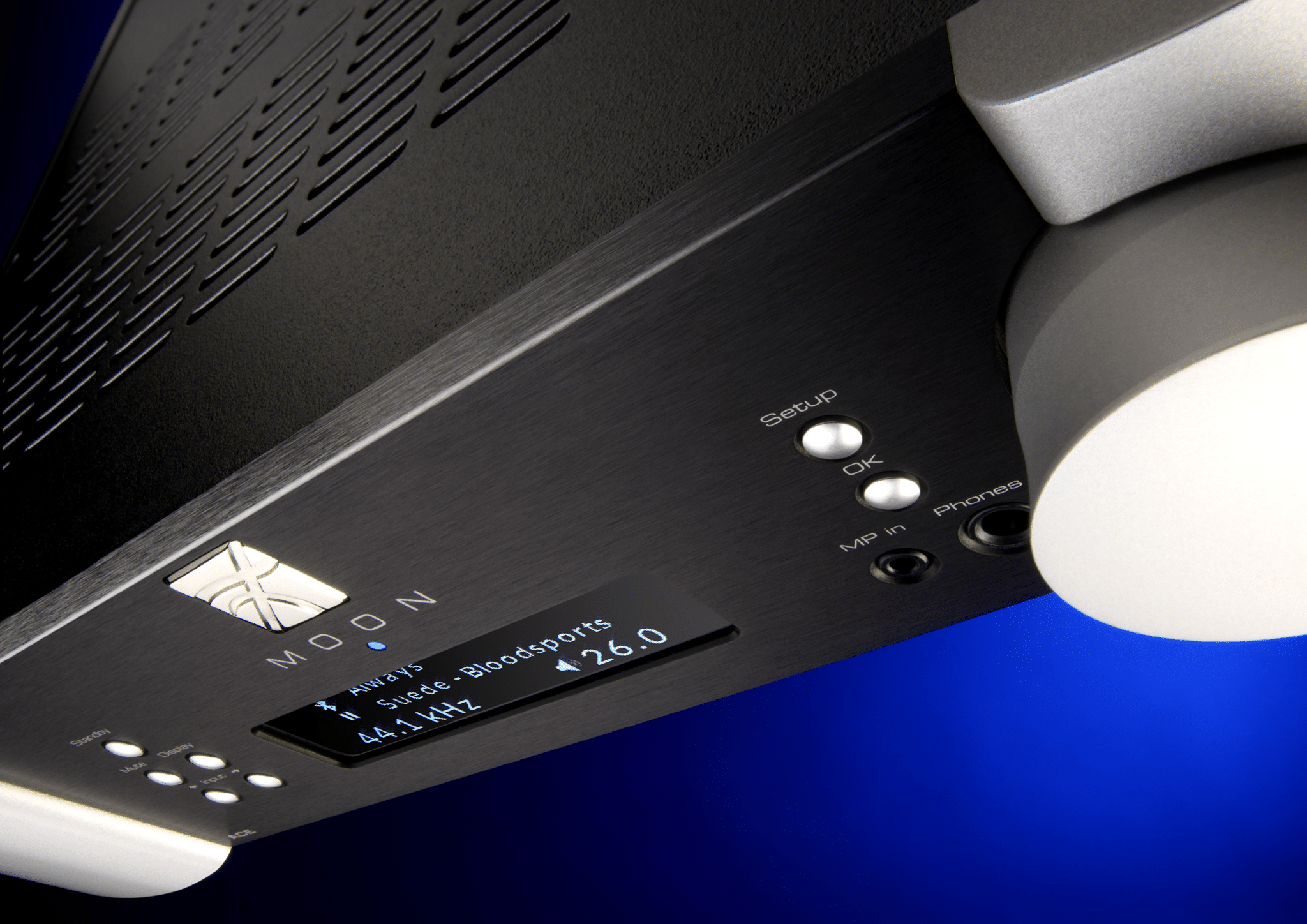
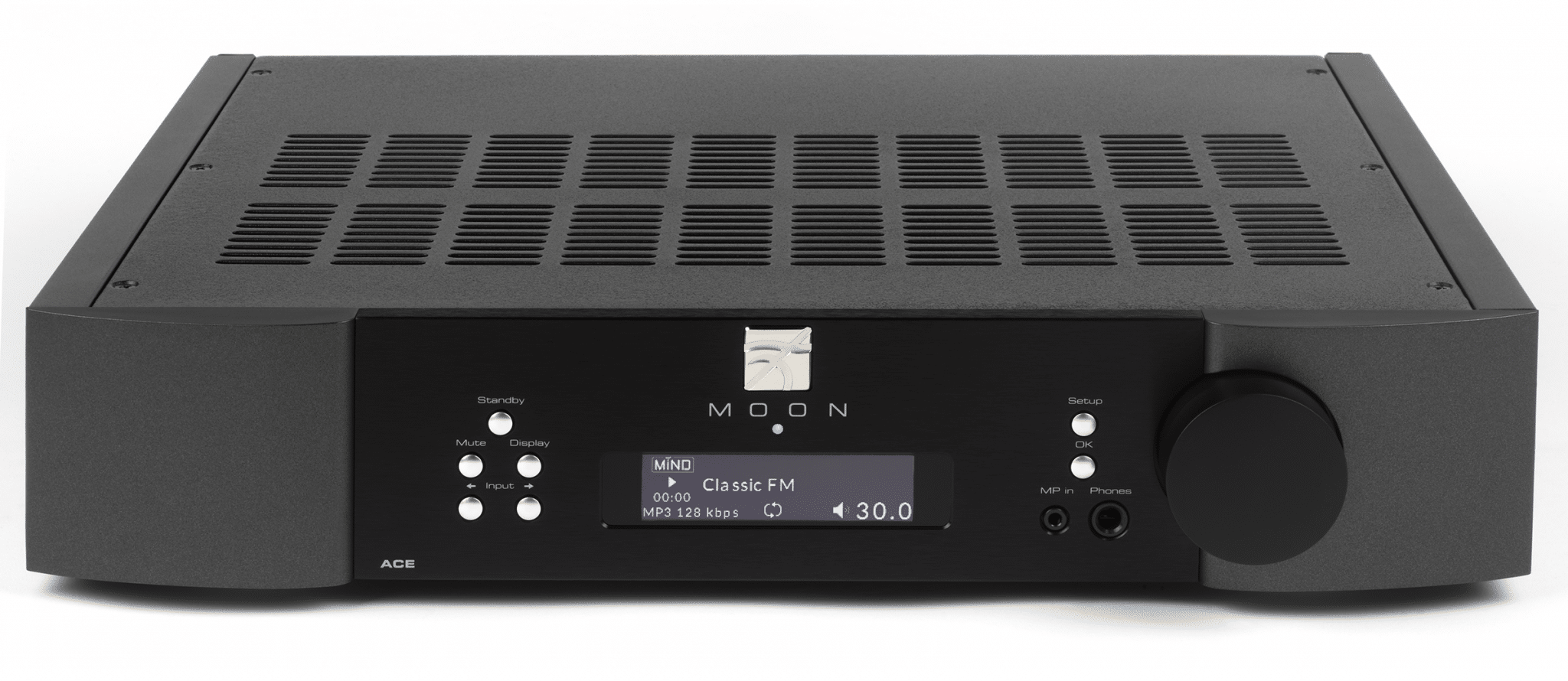
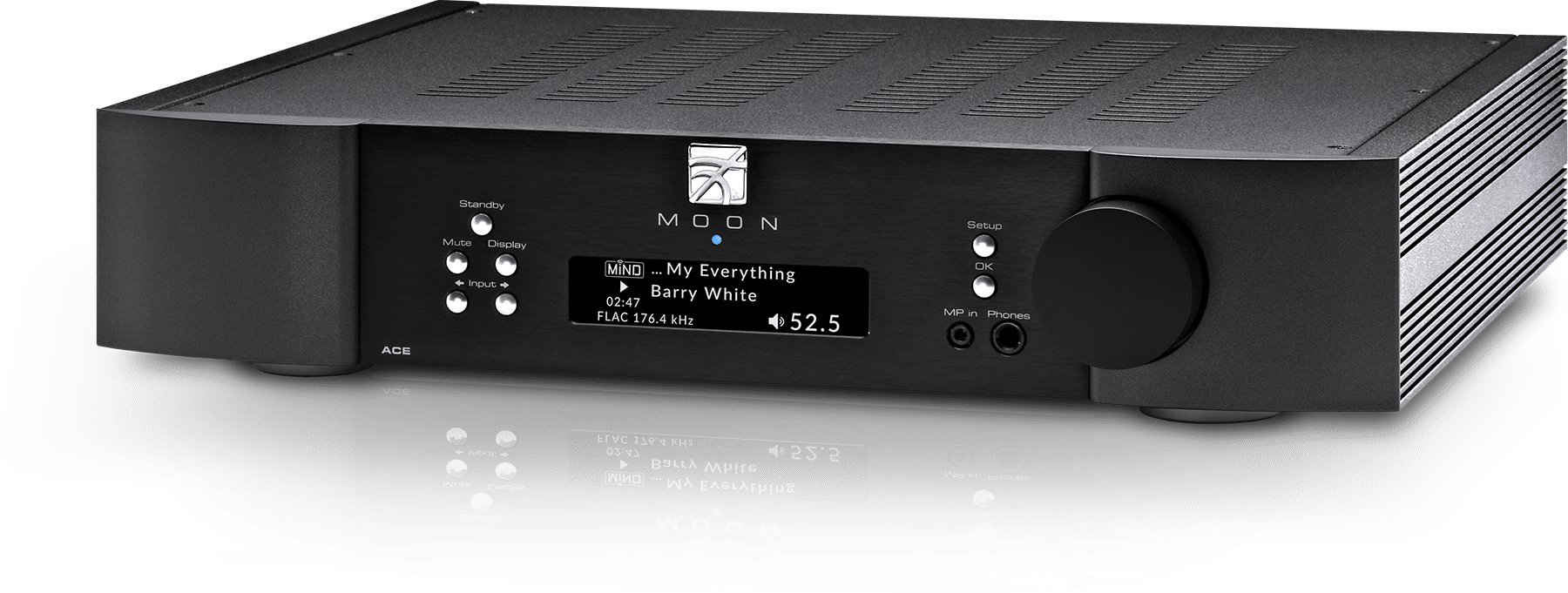
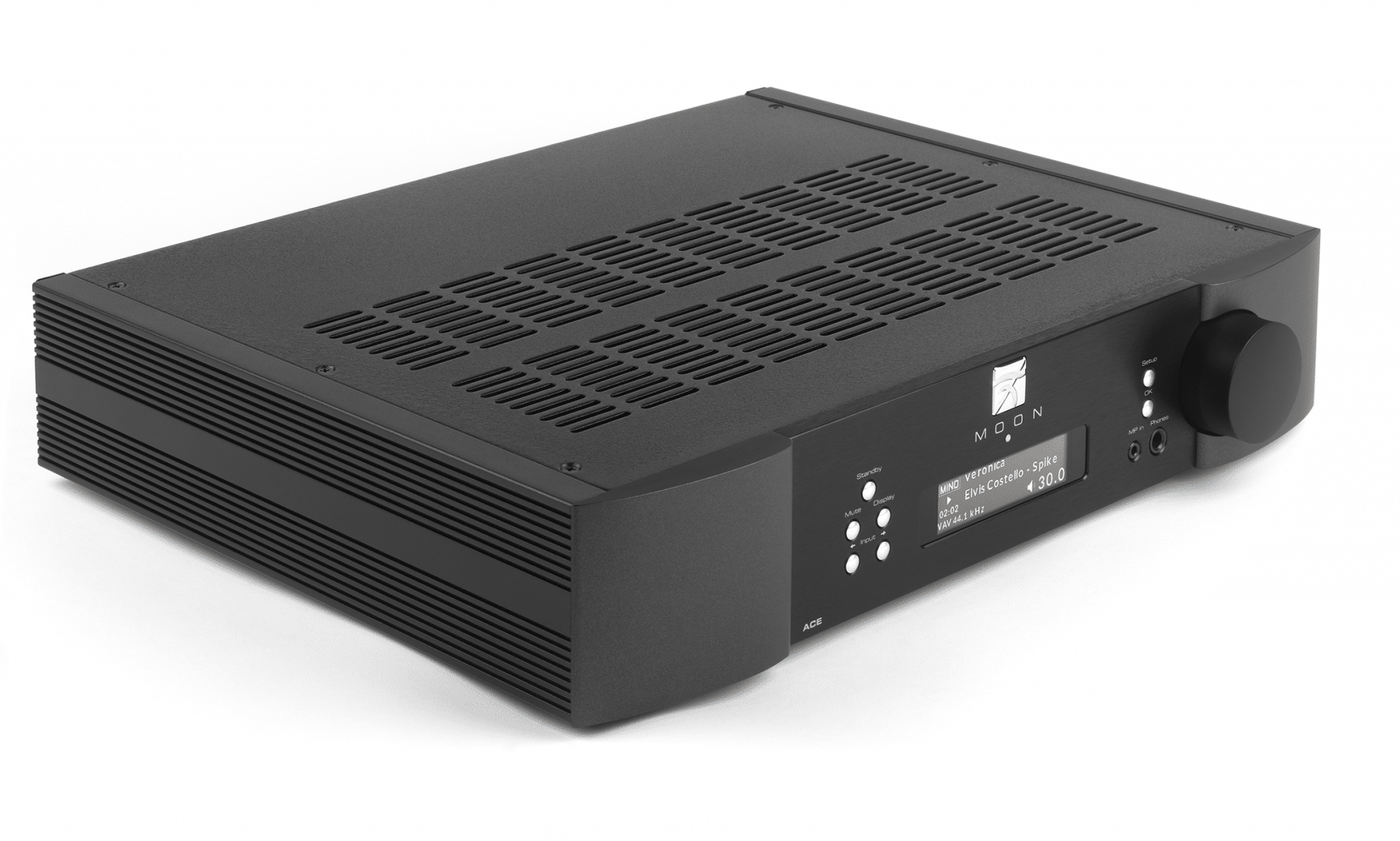

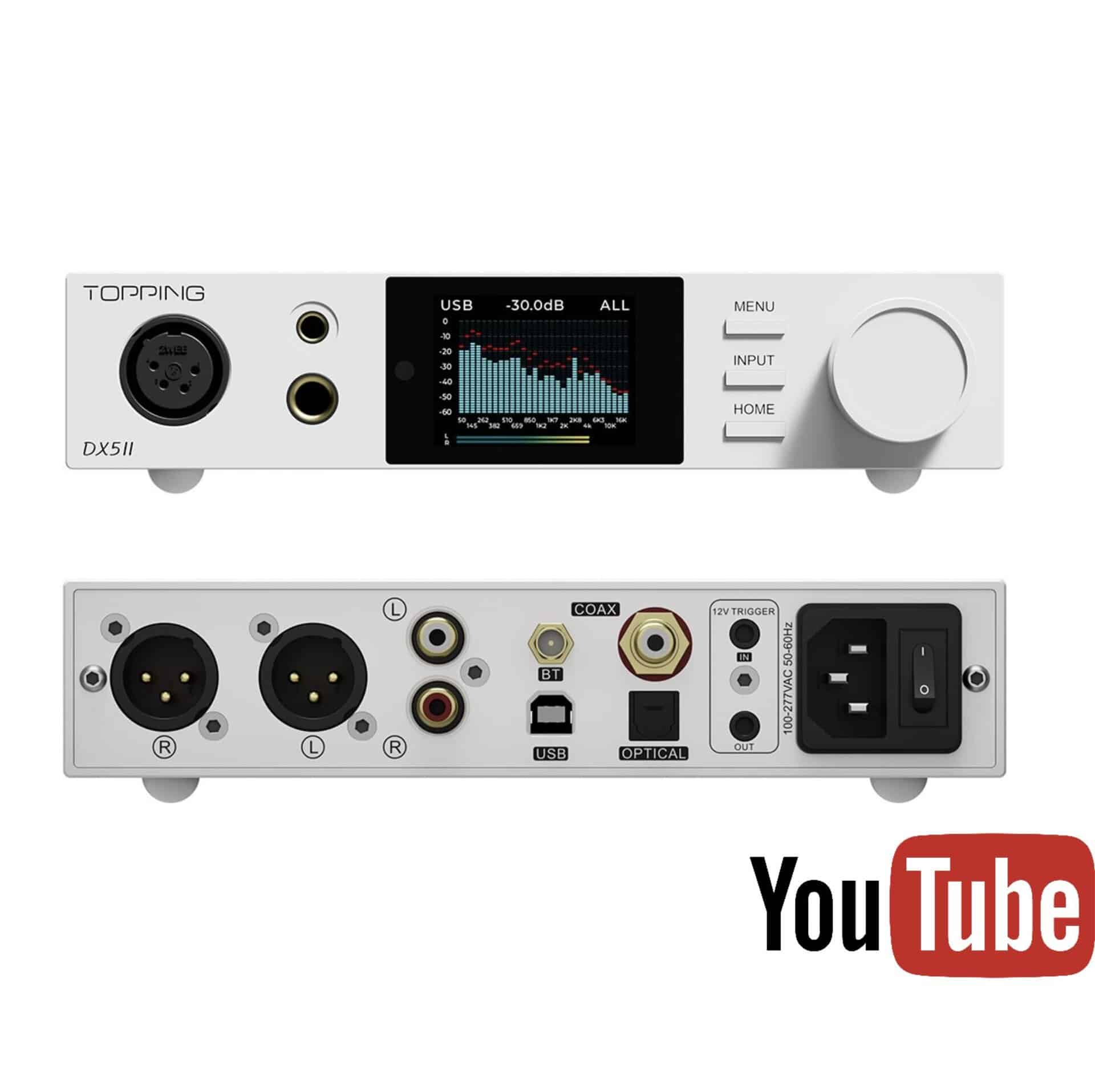

Thanks for the review. With the iPhone 6s, you may use a lossless format such as ALAC. Did you also try playing DSD music via network or USB? Would be interested to know its quality.
My apologies, I wanted to report the differences between varying hi-res levels using one format type as a reference guideline and so, for the sake a a little bit of brevity, decided to plump for PCM in his case.
Interesting review to read, having just had a demo to upgrade my system I found totally different results in the bass.
Going from a Moon i1 to the Ace using an external Moon streamer and Pro-ac Tablette 8 reference signatures I found there to be no bass at all using the Ace. Really can’t work out what was going on (since i don’t think the Ace has tone controls either).
Just wondering if you had any thoughts?
Hi Edward
I think my bass praise was constructed around the wired connected tests and not streaming and – without knowing more about your system, etc – would be my guess in terms of the possible issues you’re having. I think the i1 also has a few little issues re bass and also detail which may be exacerbated during streaming. Just an educated guess but that may be somewhere near the truth…ish.
Hi Paul,
I just purchased this unit and paired it up with the Maggie 1.7s. Sounds great and although i realize there is a break in period for both amp and speakers, I find myself wanting a bit more power. Can I add a power amp to the ACE and if so, any recommendations?
Thanks
Hi Steve – sure. This is from the manual: “The fourth pair of RCA connectors labelled ‚ÄúOUTPUT‚Äù can be used if (i) you have a stand-alone power amplifier (‚ÄúPRE OUT‚Äù) as opposed to using the ACE‚Äôs power amplifier section”. As for recommendations? That will depend on your budget. Do you have a figure?
Paul, thank you for the quick reply and your time, which is greatly appreciated. I would like to stay in the $1500-2200 range.
Thank you
Hi Steve – right, well there’s a few ways to tackle this. Either…
Buy two of these for £880 to serve as monoblocks: https://theaudiophileman.com/edge-a2-300-amplifier-review-xtz/
Rake in more cash for one of these: https://theaudiophileman.com/model-1701-amplifier-review-ovation/
There’s this one from Cambridge for ¬£1,700: https://www.cambridgeaudio.com/gbr/en/products/851/851w
And this one (link used for reference only), the Cyrus Stereo 200 at around £1,800: https://www.sevenoakssoundandvision.co.uk/p-12373-cyrus-stereo-200-power-amplifier.aspx
hi paul, I tried the ace with the bowers and wilkins 706 s2 (the speakers I have) and was amazed with it, lots of detail and the sound stage was amazing, I did find the amount of bass was good (I do listen to some bassy music aswell), do you think 50 watts is enough for those bookshelfs? . I have tried the heed elixir, rega brio 2017 and naim 5si, but all on different speakers I was just wondering whats your take on those amps compared to the ace adding maybe a blue sound node 2i or something of the sort. Also, how about the 240i? is it worth the extra 700-800 more over it for the streamer? thanks a lot
Hi Juan
Thanks for your questions. The 706 speakers should work fine. I wouldn’t compare a specialist amplifier with an all-in-one unit. The specialist will/should be better at doing its one job but the all-in-one is being asked to do many. That said, the Ace is excellent in performance terms and is highly recommended even as an amplifier. You could apply the same notion to a streamer. If you can, I would always separate units to reduce noise but Moon does a great job with its all-in-ones. If you purchase the Ace, you won’t be disappointed.
thanks for your answer Paul, I might be able to get the ACE at an even lower price than the 240i, I might just go that route as I´m quite new in this world.
I´m open to any other suggestions from your part if you have any to comment.
Hi juan – for all-in-one designs, Moon make some of the best out there. I reckon you’ve made a good choice 🙂
got it yesterday for 2000 brand new, thanks paul
Hi Juan
Can I ask where you picked up the ACE for that price?
Dealers are asking £3K and I am in the market to buy one.
Thanks
Hi David – I think I did this review around 4 years ago or so. Inflation perhaps?
Hi Paul
Thanks for the info; good point, I guess that is the case; makes me consider if the Ace is still excellent value due to being 4 years old now compared to newer offerings from Naim etc
Saying that I guess you can upgrade the streamer if improved components come out.
I am reading too many reviews about Hagel and others and getting caught up in the power argument I.E.: Is 50watts enough etc
I have listened to the Ace and it is fantastic; I like the fact they do everything in house and get the impression this has been designed really well.
I should just go and get the thing; thinking of paring with Fynne Audio F501 and Rega P3
Thanks
Thanks
Hi david, I bought in the us from Audiolab July 2019, it was slashed to 2000 USD because the the ace now has de MIND v2 and mine has the previous version.
You crack me up. –
“you either fully embrace the lifestyle ethic and spend millions making the box foolproof in terms of its usability so that even your Granny can‚Äôt cock it up (i.e.: like a Sky TV box or similar) while spending more millions on marketing and support for those Grannies that have managed to do just that or you realise that you would be over-reaching to even try. Once you‚Äôve come to the latter realization, you save time, money and certain hassle by aiming your box at the hi-fi and audiophile specialists.”
I’m the Granny and I brought home my ACE and Totem speakers this week! And, I get it, I’magonnahavetobea pain in someone’s arse until I get a few things figured out. Thought I asked all the right questions before I bought it but am now am waiting for someone to respond to me about:
1) connecting my AppleTV for sound output through my Moon ACE;
2) connecting my Other Room Bluetooth speaker;
3) If I cannot stream content from appletv into my sound system how about from my phone which is my dedicated MoonMind player? If I stream a YouTube video on that same device, how can I get the sound into my Sound System?
I wonder if you might be generous enough to give me a clue, a few clues, about these issues?
Hi Pat – okey dokey. First up, is your Apple TV connected to your TV? What do you want to do with it exactly? Is this your preferred streaming option – as opposed to a phone/tablet/laptop, etc? What brand/model is your Bluetooth speaker?
I recently picked up a used Moon ACE and I’m loving it. Actually, I’m missing it. It’s up with Simaudio now being upgraded to the Mind 2 variant. Despite its modest 50W power rating, it seems to drive my inefficient KEF 104aBs adequately. I do have to turn the volume up to 50-60/80 but I’m okay with that. I think. I have considered a power amp because I like the idea of having plenty power to spare, and I appreciate Paul’s suggestions above. But I wonder, would I be sacrificing louder for better? Would those amps diminish the beautiful sound the Moon ACE provides? Thanks!
I would recommend upgrading only to a special pre and a power. By all means use the Ace as a bridge during that process but I wouldn’t add a power amp as an actual solution to anything. Moon does make some excellent pre/power solutions too.
Thank you very much for the reply, Paul. I’m thrilled to find your website. Just to clarify, are you saying that purchasing even a good quality power amp and pairing it with the ACE would be a sideways move? And in order make an appreciable improvement I would have to move on from the ACE and upgrade to super good pre- and amp separates? If so, I’ll stick with the ACE for at least a few years. It’s fantastic.
A little off-topic, but do you have any experience with the KEF 104 aBs?
Hi Sean – I’m sure that you will experience sound enhancements if you added a quality power amp to the Ace. I would guess, a more mature overall sound, confident bass and so on. But not upgrading the integrated to a specialist pre-amp will also result in detail being masked because the signal has extra barriers to cross. The best tool for a pre-power job is not an integrated amp of any sort. The best tool is a pure pre-amp. So what I’m saying is that you will hear improvements but not of the magnitude that you would otherwise hear. Value for money will be decreased and the enhancements will be, I don’t know 40% instead go the full 100%. I wlays recommend buying the best tools for the job. If you fudge it then your sound will similarly be fudged.
From what I hear, the KEFs are nice, coloured though with 70s warmth, not exactly neutral in presentation.
Makes perfect sense, Paul. Thank you for the thoughtful reply.
Bringing life back to an older article, but I just brought anACE home to demo and the sound is amazing. I too wonder if power will be a limiting factor as my Spendor SP200’s are pretty massive, but still pretty efficient. I am thinking of adding a power amp as well, but rather than a shiny new beast, maybe about a 200w to drive the bottom end of the spendors while letting the ACE handle the mods and highs. Maybe something from Parasound as they tend to have more gain control for matching things up well.
Sounds like an interesting plan. Let me know how you get on and, if you sort that, how it affects the final sound.
Chuck, I look forward a follow-up comment from you if go ahead with a power amp. I’m still considering amping things up myself.